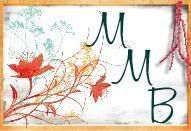Hindu/Buddhist deities are depicted with animal and plant attributes, just as among the ancients of Near East, Celtic, or Native American traditions. In fact, many of their images, and the rituals practiced to invoke them, have direct correspondences with deities in our pre-Christian past. Yogis still serve a shamanic, guiding role for seekers, rather than as priests imposing Gods will. Godhead is understood as immanent in Nature, immediately accessible to human experience.
Eight clear paths, including bhakti (devotion), jnana (mental concentration, akin to prayer), and karma (good works), offer union (samadi) with the Divine. Both male and female are viewed as tantric process to be cherished and practiced joyfully, rather than as carnal traps that diminish our spiritual capacity.
Clay images called murtis are used to concentrate meditative focus. They are springboards into the spiritual realm, harbingers of inward peace. They symbolize the interrelatedness of the mundane world with the sacred.
While Western spirituality focused on authoritarianism, sin, and joy-to-come in heaven, these Eastern traditions maintained closer ties to the Earth-venerating concepts of Neolithic humanity. The Divine Union of Opposites, of Goddess and God, female and male, human and animal/plant realms, remained the central concern.
courtesy by JBL Statues
4 years ago








No comments:
Post a Comment